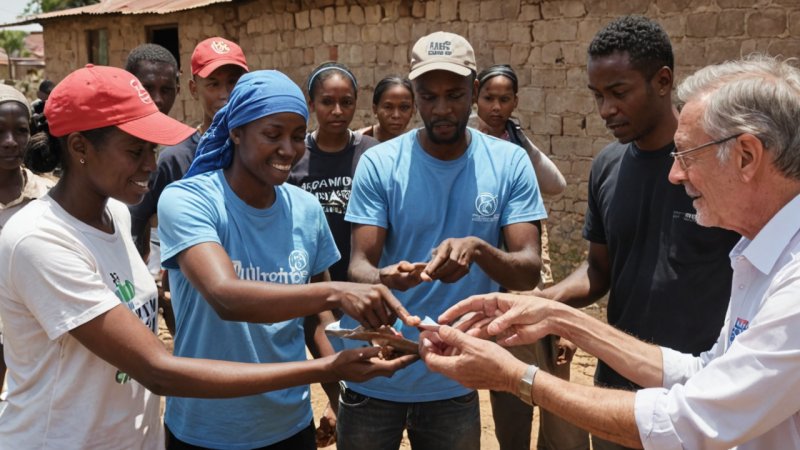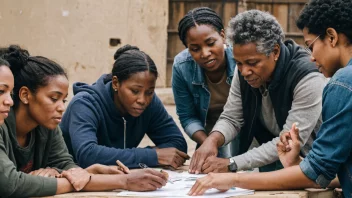Humanitarian relief efforts are crucial during times of crisis, and partnering with local organizations can enhance the effectiveness of these initiatives. Local organizations often have invaluable knowledge of the community, established trust, and the ability to mobilize resources quickly. However, the nature of these partnerships can vary significantly, and understanding the pros and cons of different types of collaboration is essential for maximizing impact. This article explores two primary approaches to partnering with local organizations: formal partnerships with established NGOs and grassroots collaborations with community-based organizations.
Formal Partnerships with Established NGOs
Formal partnerships involve collaborating with established non-governmental organizations (NGOs) that often have a significant presence and resources dedicated to humanitarian relief. These organizations typically have structured programs, experienced staff, and a network of volunteers.
Pros
- Credibility and Trust: Established NGOs often have a reputation that can lend credibility to relief efforts, making it easier to gain support from donors and volunteers.
- Resources and Expertise: Formal NGOs usually have access to a wide range of resources, including funding, logistics, and specialized personnel who can offer expertise in various aspects of humanitarian aid.
- Structured Programs: These organizations often operate structured programs that can streamline the process of delivering aid, ensuring that it reaches those in need efficiently.
Cons
- Cost and Bureaucracy: Formal NGOs may have higher overhead costs, and their bureaucratic structures can sometimes slow down decision-making and implementation.
- Less Local Insight: While they may have experience, established NGOs may lack the nuanced understanding of local issues that community-based organizations possess.
- Potential for Misalignment: There may be a disconnect between the goals of the NGO and the actual needs of the community, leading to ineffective interventions.
Grassroots Collaborations with Community-Based Organizations
Grassroots collaborations focus on partnerships with local community-based organizations that are often directly embedded within the communities they serve. These groups may be smaller and less formalized but can offer unique advantages in humanitarian relief efforts.
Pros
- Community Trust: Grassroots organizations often have deep-rooted relationships within the community, leading to a higher level of trust among residents.
- Tailored Interventions: These organizations are typically more aware of local needs and can tailor their interventions to address specific issues effectively.
- Flexibility: Grassroots organizations can adapt quickly to changing circumstances and community feedback, allowing for more responsive and relevant aid delivery.
Cons
- Limited Resources: Many community-based organizations may lack the funding or resources that larger NGOs possess, which can limit their capacity to respond to crises.
- Less Recognition: Grassroots organizations may struggle to gain visibility or credibility compared to established NGOs, which can hinder fundraising efforts and volunteer recruitment.
- Potential for Fragmentation: Without coordination, multiple grassroots organizations may operate in silos, leading to duplicated efforts and wasted resources.
Key Differences Between Approaches
When considering how to partner with local organizations for humanitarian relief, the key differences between formal partnerships and grassroots collaborations become evident.
- Scale: Established NGOs often operate on a larger scale, while grassroots organizations focus on localized efforts.
- Decision-Making: Decision-making processes tend to be more centralized in formal NGOs, whereas grassroots organizations often prioritize community input.
- Funding Sources: Formal NGOs typically have diverse funding sources, including grants and corporate sponsorships, whereas grassroots organizations may rely more heavily on local fundraising and community support.
Making the Right Choice
Ultimately, the choice between partnering with formal NGOs and grassroots organizations depends on the specific context of the humanitarian relief effort. For large-scale disasters requiring immediate and coordinated responses, formal partnerships may be more effective. Conversely, for ongoing community development initiatives or localized crises, grassroots collaborations may yield better results.
When considering how to engage with local organizations, it is essential to assess the needs of the community, the nature of the crisis, and the resources available. Collaborating with a combination of both types of organizations can also be a viable strategy, leveraging the strengths of each to create a more comprehensive and effective relief effort.






